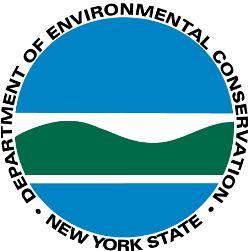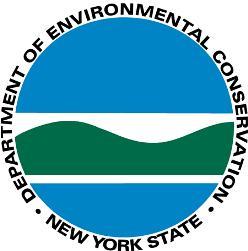Author Name: John Burmeister
The DEC is proposing to:
Establish a three-day youth firearms season for deer to occur during Columbus Day weekend in portions of the Northern and Southern Zone where deer may be taken with a firearm which will increase opportunities for junior hunters. Junior hunters (ages 14 and 15) will be authorized to take one deer of either-sex with a firearm during the youth season. DEC anticipates participation by approximately 16,000 youth hunters, roughly one youth hunter for every two to three square miles of deer habitat in New York. The youth season will run concurrently with early bowhunting season and is not expected to have any noticeable impact on deer behavior or bowhunter success, particularly in light of the more than 100,000 small game hunters also afield during the early fall. Youth deer hunts are held concurrent with bowhunting seasons in many other states, including Connecticut, New Jersey, Ohio, and Pennsylvania. Opinions of potential participants about a youth firearms season can be found at www.dec.ny.gov/docs/wildlife_pdf/ythdeer2012.pdf.
Lengthen bowhunting seasons in the Southern Zone by moving to a fixed opening date of October 1 to increase bowhunting opportunities. This will lengthen bowhunting seasons in the Southern Zone, and lengthen the regular season (bowhunting only) in Westchester County by an average of 15 days and include an additional four weekend days in most years.
Adjust the Northern Zone muzzleloader and regular season start dates by up to one week later certain years to increase bowhunting opportunities and accommodate the proposed youth firearms season. This rule will begin the Northern Zone muzzleloader and regular seasons one week later in 6 of 10 years allowing for a longer early bow season these years.
Establish a late bowhunting season in the Northern Zone, concurrent with the late muzzleloading season, to increase bowhunting opportunities. This rule will increase bowhunting opportunities in the Northern Zone by an additional seven days and will be similar to the concurrent bow and muzzleloader seasons in the Southern Zone.
Allow DMPs to be used during Northern Zone bow and early muzzleloader seasons to simplify regulations and increase hunter opportunity and choice. Current regulations allow use of DMPs in the Northern Zone only during the regular season and late muzzleloader season. This change will only affect those portions of the Northern Zone where DMPs can be issued (Wildlife Management Units (WMUs) 6A, 6C, 6G, 6H, 6K), and this change will not affect the number of DMPs issued. WMU locations can be identified at http://www.dec.ny.go...tdoor/8302.html.
Establish mandatory antler restrictions in WMUs 3A, 4G, 4O, 4P, 4R, 4S, and 4W to reduce harvest of yearling (1.5 year old) bucks. The mandatory antler restriction will prohibit hunters during all seasons in all portions of the listed WMUs from taking an antlered deer unless it has at least 3 points on at least one antler. Hunters less than 17 years old will be exempt from the restriction. In 2011, yearlings comprised 49 percent of the total adult bucks taken in these units. This rule is expected to change harvest composition so that 15-20 percent of the adult bucks taken in these units are yearlings. The restriction is expected to decrease total buck harvest approximately 35-45 percent initially.
Simplify the description of the area open for deer hunting during the January firearms season to include Suffolk County, subject to local discharge restrictions. Current regulations include a complex and lengthy description of open areas that are unnecessary considering existing local ordinances and legal setbacks from structures for discharge of firearms.
Establish provisions for designation of Deer Management Focus Areas to intensify use of traditional hunting in specifically designated geographic areas to assist communities with the burden of overabundant deer populations. This rule will increase bag limits to two antlerless deer per hunter per day and establish a Deer Management Focus Area deer hunting season in late January. This rule will establish specific permit, tagging and reporting requirements in focus areas. This rule also defines the first such focus area in Tompkins County that includes portions of the towns of Caroline, Danby, Dryden, Enfield, Ithaca, Lansing, Newfield, and Ulysses. This area has very high deer populations and relatively poor access for hunters. Deer management focus areas will enable greater harvest opportunity for hunters who are able to gain access to lands for hunting, and are intended to augment on-going management activities in the affected area.
Adjust bear seasons in the Northern and Southern Zone to remain consistent with bow, muzzleloader and regular seasons for deer.
Correct a road name in the boundary descriptions for WMUs 5A and 5C, where Franklin County Route 24 was incorrectly identified as State Route 24.
To see more detailed explanations of these proposals, including instructions for providing comments, visit the
The public comment period will remain open until May 21.
Author Name: John Burmeister
Some of this stuff is just plain common sense, however with our ever increasing bear population this is a great reminder from the NY DEC.
With the onset of warmer weather, New York’s black bear population will be on the move. The New York State Department of Environmental Conservation (DEC) today issued guidance on how to prevent nuisance bear encounters.
Black bears will take advantage of almost any readily available food source, including bird feeders and garbage. To prevent encounters between bears and humans, people should never intentionally feed bears and should take every precaution to discourage bears from seeking out food sources in neighborhoods and other residential areas.
Typically, black bears are timid and will avoid all contact with humans. However, bears will become a nuisance and can cause significant damage if they believe they can obtain an easy meal from bird feeders, garbage cans, dumpsters, barbeque grills, tents, vehicles, out-buildings or houses.
It is not only illegal to intentionally feed bears, it is also illegal to inadvertently feed them. Specifically, after written notice from DEC, the incidental or indirect feeding of bears through food attractants such as garbage, pet food or bird seed is illegal. DEC has the authority to require the removal of these and other food attractants when bears become problematic.
It is in the best interest of both bears and people for bears to get their food solely from wild sources. Once a bear learns to associate certain structures with food, it can become a serious nuisance to people and a threat to itself. Bears that lose their natural fear of humans are much more likely to be illegally shot, hit by an automobile or destroyed under a DEC nuisance permit. Some studies suggest that when a bear is fed (either directly or indirectly), its life expectancy is cut by as much as 50 percent.
Once a bear becomes a problem, DEC is often asked to relocate the bear. Contrary to popular belief, bear relocations are rarely effective at solving the problem. Bears are extremely mobile and have excellent homing abilities. Relocated bears often return to their original capture site or maycontinue their bad habits at a new location. If the circumstances that led to the original problem are not corrected, other bears will quickly be attracted to the site and the bear/human conflicts will persist.
In addition to being ineffective, bear relocations are extremely time consuming and often dangerous. The heavy door on the bear traps, although not dangerous to bears, presents a potential danger to curious humans and pets. The simplest way to avoid a nuisance encounter is to remove all food sources. Removing the food source will remove the bear.
Because virtually all nuisance bear problems are the result of hungry bears being attracted to human food, pet food, bird food or garbage, these problems can be minimized by taking these simple precautions:
Never feed bears. It is illegal.
If you believe that bears are being fed, please report it to DEC.
· Stop feeding birds as soon as the snow melts. Birds do not need supplemental food in the summer, when natural foods are most abundant. Clean up all seed fragments and shells left over from winter feeding as the smell will attract bears.
· Dispose of garbage as frequently as possible and store in a secure building prior to disposal.
· If garbage is picked up at the curb, put the garbage out just before the scheduled pickup or place it in a roadside bear-resistant container. Do not put garbage out the night before pick-up at the curb.
Clean garbage cans frequently with ammonia.
Do not burn garbage, it’s illegal and it attracts bears.
Do not add meat scraps, bones or melon rinds to your compost pile.
· Clean up barbecue grills before night fall, and after they cool down store them inside.
· Feed pets indoors and store pet food indoors. If pets must be fed outdoors, take in all uneaten food and dishes before dark.
· Turn off kitchen exhaust fans that vent to the outside whenever possible.
· When camping, keep food out of sight and secured in the trunk of a hard topped, locked vehicle if one is available. If a vehicle is not available, hang food and garbage from a tree at least eight feet off the ground. Keep picnic tables, utensils, fireplaces and the surrounding areas clean.
Author Name: John Burmeister
Hunters in New York State harvested more than 228,350 deer and 1,250 bears during the 2011 hunting seasons, New York State Department of Environmental Conservation (DEC) Commissioner Joe Martens announced today. The deer take nearly matched the 2010 deer take while a new record was set for the bear harvest in southern New York.
“Deer and bear hunting are long-standing traditions in New York, providing a valuable source of food and a means of shared recreation for many families,” Commissioner Martens said. “Throughout the state, hunters play a crucial role by helping to maintain healthy and ecologically sound deer and bear populations.”
Deer Harvest
The 2011 deer take varied less than one percent from the 2010 take statewide. In 2011, hunters took slightly more than 118,350 antlerless deer (adult females and fawns) and just over 110,000 adult male deer (bucks). In the northern zone, the buck take (about 15,900) was essentially unchanged from 2010, though the antlerless harvest (about 10,900) was down about 13 percent from last year. In the southern zone, excluding Long Island, the adult buck take (about 93,100) increased nearly four percent over last year while the antlerless harvest (about 105,400) decreased by three percent.
2011 marked the first year that crossbows were allowed as a legal hunting implement for deer. However, legislation limited crossbow use to the regular firearms seasons and subsequent muzzleloader seasons for deer. Relatively few hunters took crossbows afield and the estimated take by crossbows was only 491 deer statewide, less than 0.25 percent of the total deer harvest.
Throughout the state, hunters took a slightly higher proportion of 2.5-year-old and older bucks than in previous years, continuing a trend that has developed over the past two decades. Throughout most of New York, hunters can take a buck of any age, but an increasing number of hunters are voluntarily choosing to take older bucks with larger antlers. In 2011, 46 percent of harvested bucks were 2.5-years-old or older, compared to only 33 percent in 2000 and 28 percent in the early 1990s.
Western New York and the Finger Lakes Region perennially lead the state in total deer-harvest densities, and deer take in 2011 remained true to form. The top five counties for 2011 were Yates (16.4 total deer per square mile), Wyoming 13.8 , Genesee 10.8, Ontario 10.5, and Livingston 10.0.
It’s important to note that the total deer harvest is strongly impacted by the number of Deer Management Permits (DMPs) available in a given area, which govern the harvest of antlerless deer and are used to manage the deer population in a given area.
A more accurate picture of relative deer abundance is revealed by the number of bucks harvested per square mile. The five counties with the most bucks harvested per square mile were: Yates (5.6), Wyoming (5.4), Orange (4.1), Ontario (4.1), and Allegany (4.0). The deer populations in four of the counties listed above (all except Allegany County) are higher than the deer population objectives set for those counties. DEC will continue its efforts to reduce the deer population to achieve the desired density levels wherever necessary.
In 2011, DEC adopted a white-tailed deer management plan (see: www.dec.ny.gov/animals/7211.html#DeerPlan). The plan will guide DEC deer management and deer hunting decisions for the next five years. In the upcoming weeks, DEC will propose several regulation changes that were identified in the deer management plan. Hunters and the public will have the opportunity to comment on these changes when a formal proposal is made. Some of the proposed revisions include:
· change the start date of the southern zone bow season to October 1;
· establish a youth hunt for deer;
· allow DMPs to be used during the northern zone bow and muzzleloader seasons;
· establish mandatory antler restrictions in seven additional Wildlife Management Units in the Catskills;
· establish a late bowhunting season in portions of the northern zone; and
· establish Deer Management Focus Areas to expand the use of traditional hunting in areas with overabundant deer.
Bear Harvest
Outside of the Adirondack region the 2011 bear harvest set new records, substantially exceeding previous record takes in central and western New York. In contrast, bear take in the Adirondack region dropped to a level not seen since 1998.
Hunters in southeastern New York harvested 630 bears in 2011, besting the previous record of 520 set in 2008. This was due in part to a new rule that expanded bear hunting in eastern New York State to include all or portions of seven new counties in eastern New York from Rockland and Westchester north to Washington beginning in 2011. Hunters took 50 bears from this new area, including 18 bears taken in Washington County, 11 in Rensselaer County, 10 in Columbia County, seven in Dutchess County, two in Putnam County and two in Rockland County. Yet even without these additional bears, take in the rest of the southeastern region exceeded previous record levels, reflecting a 25-year trend of generally increasing bear harvests in this region.
In central and western New York, the 2011 bear take of 353 greatly surpassed the previous record of 193 bears set in 2008. This was due in large part to a regulation change that moved the regular bear season opening day up one week to coincide with the start of the regular deer season. This change was implemented to reduce bear population growth and range expansion. Yet, as with bear take in the southeastern region, it is likely that even without these additional seven days of the regular season in the central-western region, bear take during the traditional season would have matched or exceeded the 2008 record, reflecting a 15-year trend of generally increasing bear harvests in this region.
In the Adirondacks, bear take was below the five-year average during each of the bear seasons and the overall bear take was down about 47 percent from 2010.
Bear harvest rates in the Adirondacks typically drop in the early season during years of abundant soft mast (cherries, raspberries and apples), while the take will increase during the regular season in years with abundant beech nuts.
This past season provided abundant soft mast, particularly raspberries and blackberries in September and October, and bear take during the early season was only 70 bears, about 70 percent below the five-year average. Beech nut abundance was mixed throughout the Adirondacks and the regular season bear take was approximately 15 percent below the five-year average. Additionally, much of the muzzleloading and regular season in the Adirondacks had above average temperatures and snow cover was inconsistent and relatively scarce making bear hunting all the more challenging.
Deer and bear harvest data are gathered from two main sources: harvest reports required by all successful hunters and DEC’s examination of harvested deer and bear at check stations and meat processors. Statewide harvest estimates are made by cross-referencing these two data sources. For more information about the 2011 deer and bear harvests, see DEC’s website at: www.dec.ny.gov/outdoor/42232.html.
See attached PDF for breakdown of the harvests.
Author Name: John Burmeister
The 2011 hunting season tied 2009 for New York State’s safest year of hunting on record based on the number of hunting-related shooting incidents, the New York State Department of Environmental Conservation announced today.
“Hunting is a tradition in New York state that continues to be safely enjoyed by many” said DEC Commissioner Joe Martens. “New York has an extremely safety-conscious generation of hunters thanks largely to more than 60 years of dedicated efforts of 3,000 volunteer Sportsman Education Instructors. All first-time hunters are required to attend a comprehensive hunter safety course of a minimum of 10 hours taught by DEC’s highly-trained instructors. Their hard work is paying off.”
In the 2011 hunting seasons, 26 personal injury hunting-related shooting incidents were reported, including four fatalities. All of the fatalities occurred during the regular deer season, one of which was self-inflicted.
The hunter safety courses stress safe practices and ethics, along with information on New York’s game species and their management. All courses are offered free of charge, but students must successfully complete the course and pass the final exam before being eligible to purchase a hunting license.
The number of hunters in New York State is declining, but the hunting incident rate (incidents per 100,000 hunters) is falling at a much faster rate. Since the 1960s, the number of hunters has declined about 20 percent, while the incident rate has declined more than 70 percent. The past five-year average is 5.3 incidents per 100,000 hunters, compared to 19 per 100,000 in the 1960s.
While hunting is safer than ever, accidents do happen and it is important to remember that every hunting-related shooting incident is preventable. Many, if not all of these incidents could have been prevented, if only the shooter or victim had followed the primary rules of hunter safety:
· Treat every firearm as if it were loaded
· Keep your muzzle pointed in a safe direction
· Identify your target and what lies beyond
· Keep finger off the trigger until ready to fire
· Wear hunter orange
Author Name: John Burmeister
Bow Hunter and Hunter Safety Courses for Children 12 – 16 years-old Will Be Offered
Two separate two- day hands on programs on bow hunter safety and hunting safety will be offered in March and April by the New York State Department of Environmental Conservation’s (DEC) Sportsman Education unit.
The Bow Hunter Safety Course will be offered on March 17 and 18 and the Hunter Safety Course will be offered on April 14 and 15 at the Peconic River Sportsman’s Club in Manorville.
Both events are being sponsored by the DEC’s Sportsman Education unit, the New York State Conservation Officers Association and the Peconic River Sportsman’s Club.
“Hunting and fishing are an important part of Long Island’s heritage, and we are very fortunate that our region offers a multitude of diverse and rewarding recreational opportunities,” DEC Region One Director Peter A. Scully said. “DEC applauds our local sportsmen and women, the Conservation Officers Association and the Peconic River Sportsman’s Club for their tireless work towards the protection of our environment and natural resources. The 2012 Youth Conservation Program is the perfect way to introduce children to hunting ethics and to teach them how to be responsible hunters.”
Each class is limited to 40 participants and selections are made by a panel that reviews a 75-word application.
Participants who successfully complete the program will receive their Hunter Education Training Certificate or Bow Hunter Education Training Certificate. These certificates are required in order to purchase a hunting license.
Enrollment in the class is open to all boys and girls between the ages of 12 and 16 who have not yet taken either their Hunter Education or Bow Hunter Education course.
For more information or to register for one or both of these sessions, contact the NYS DEC Sportsman Education Office at (631) 444-0255. A link to the application for these programs can be found at: http://www.dec.ny.gov/public/956.html.











